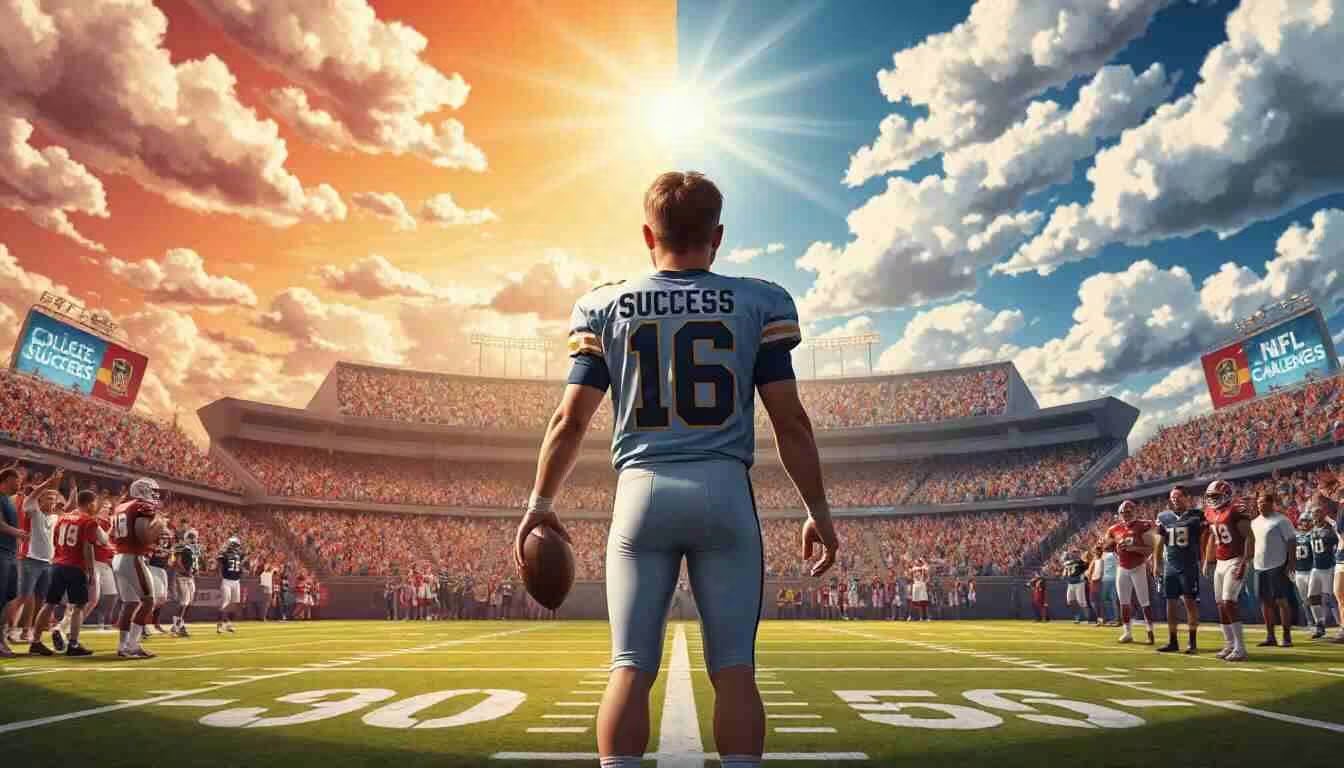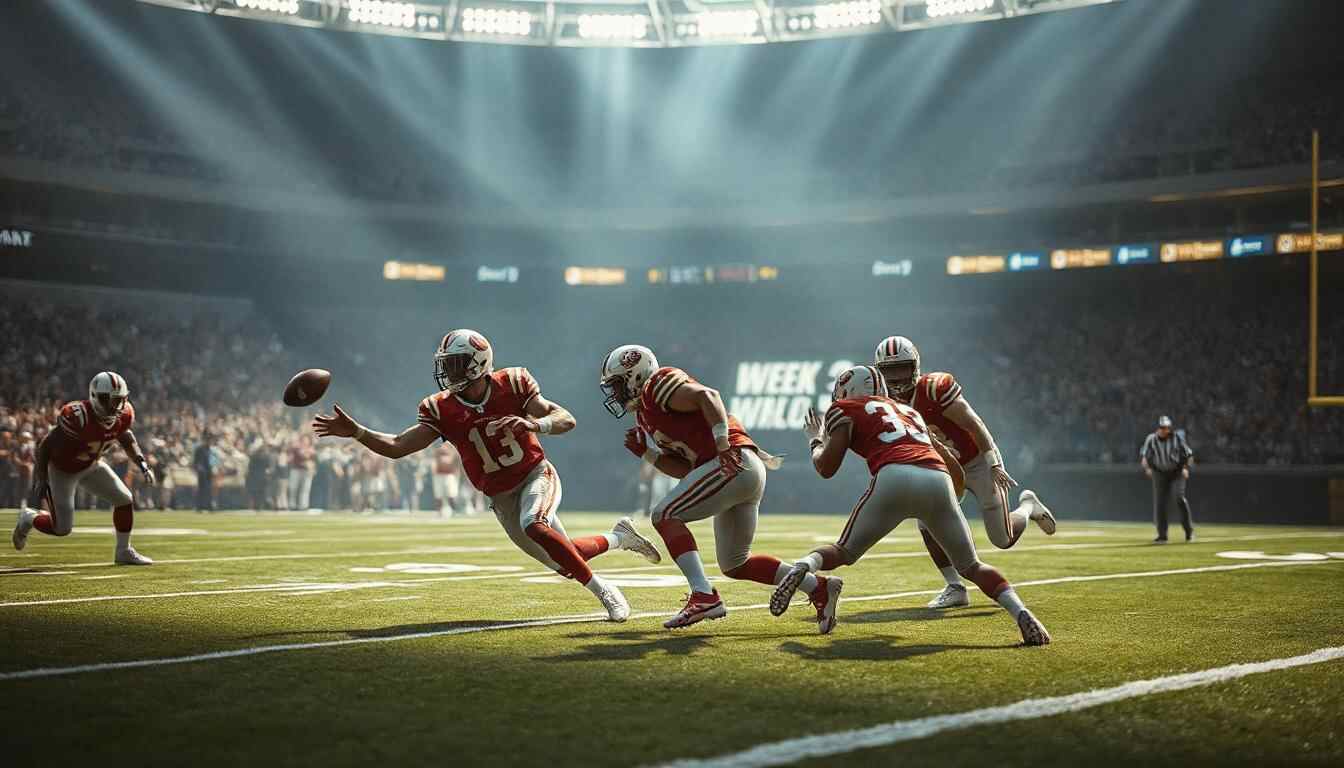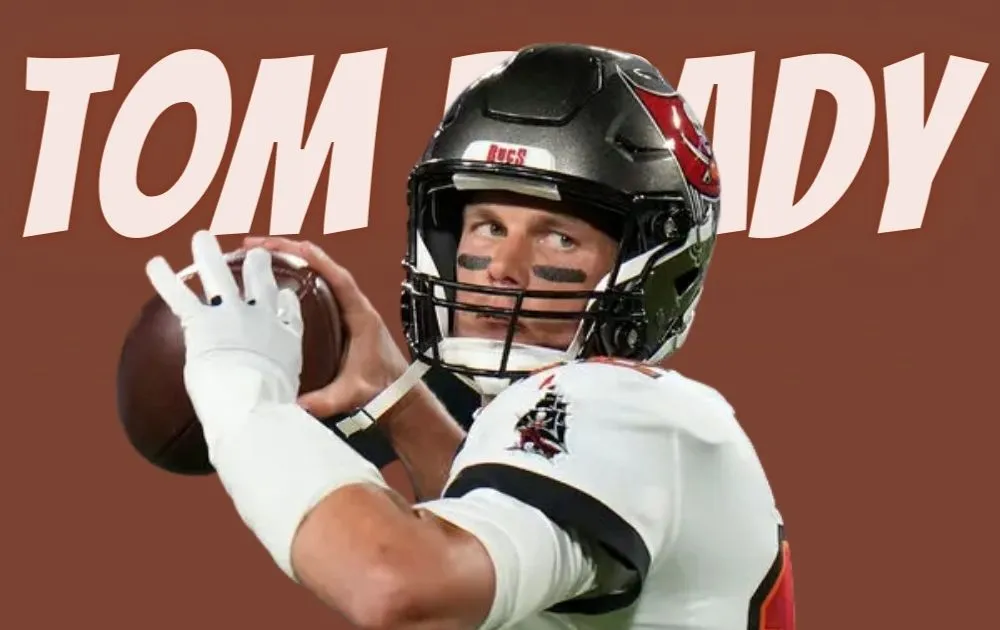Transitioning from college football to the NFL is one of the toughest challenges for any athlete. While some quarterbacks dominate the college game, leading their teams to championships and breaking records, they often struggle to replicate this success in the professional league. This post highlights one such player—a standout college quarterback whose NFL career didn’t quite live up to expectations. By examining his journey, this discussion sheds light on the factors that make or break players as they move to the highest level of football.
Many quarterbacks succeed in college because their teams build systems around their strengths. They also face less experienced defenses and often have the advantage of strong team chemistry. However, the NFL brings faster players, more complex strategies, and higher expectations—making it a completely different ballgame.
The College Football Phenomenon
College football has unique dynamics that can help quarterbacks thrive. The systems, coaching, and environment are often tailored to bring out the best in players. Let’s look at the key reasons behind their success.
What Makes a College Quarterback Successful?
-
Tailored Systems: College offenses are often designed to play to the quarterback’s strengths. Whether it’s a spread offense or run-heavy strategy, these systems minimize their weaknesses.
-
Athletic Advantage: Quarterbacks with great physical skills can dominate in college. Dual-threat players who can both run and throw effectively often overwhelm less experienced defenses.
-
Team Environment: In college, quarterbacks often lead teams with strong camaraderie and simpler playbooks, making it easier to build confidence and deliver standout performances.
Challenges in Moving to the NFL
-
Elite Competition: The NFL features the best players in the world, and defenses are faster, stronger, and more skilled than those in college.
-
Complex Schemes: NFL playbooks are much more advanced, requiring quarterbacks to read defenses quickly, make split-second decisions, and execute precise plays.
-
Physical Demands: NFL players are bigger and hit harder. Quarterbacks must be physically durable and mentally resilient to handle the pressure.
-
Media and Scrutiny: NFL players face intense media attention, which can add stress and impact their performance if they don’t manage it well.
Tim Tebow: A Case Study

Tim Tebow is one of the most famous examples of a college quarterback who excelled in college but struggled in the NFL.
Tebow’s Legendary College Career
Tebow played for the University of Florida from 2006 to 2009, where he became a household name. Here’s what made his college career extraordinary:
-
Heisman Trophy Winner: Tebow won the prestigious Heisman Trophy in 2007, becoming the first sophomore to do so.
-
National Championships: Tebow led the Gators to two national titles in 2006 and 2008, solidifying his legacy as one of college football’s greatest players.
-
Exceptional Stats: During his college career, Tebow threw for 9,285 yards, rushed for 2,947 yards, and scored 145 total touchdowns. His dual-threat ability made him nearly unstoppable.
-
Inspiring Leader: Tebow’s leadership and passion inspired his teammates and fans alike. His emotional speeches and relentless work ethic became iconic.
Tebow’s Struggles in the NFL
Despite his college success, Tebow’s NFL career didn’t live up to expectations:
-
Draft Day Controversy: Tebow was selected 25th overall by the Denver Broncos in the 2010 NFL Draft. Many questioned whether his skills would translate to the professional game.
-
Brief Moments of Success: Tebow had some shining moments, such as leading the Broncos to a playoff win in 2011. However, his inconsistent passing and unconventional mechanics limited his effectiveness.
-
Short-Lived Career: After three seasons, Tebow’s time in the NFL came to an end. He had brief stints with the Jets, Patriots, and Eagles but never secured a long-term role. He eventually pursued careers in baseball and broadcasting.
Why Tebow Struggled in the NFL
Several factors explain Tebow’s challenges in transitioning to the NFL:
1. Throwing Mechanics
Tebow’s throwing motion was unorthodox, with a slow release and inconsistent accuracy. While his mechanics worked in college, NFL defenses were quicker and better at exploiting these weaknesses.
2. System Mismatch
Tebow thrived in Florida’s spread-option offense, which allowed him to use his running ability. NFL teams, however, use pro-style systems that demand precision passing and quick decision-making—a poor fit for his skill set.
3. Tougher Defenses
NFL defenses are far more advanced than college defenses. Tebow’s running ability was less effective against faster and more disciplined NFL defenders, and his passing limitations became a liability.
4. Media Pressure
Tebow’s popularity brought intense media scrutiny. The constant attention may have made it harder for him to develop his skills and adapt to the NFL quietly.
Other College Stars Who Struggled in the NFL
Tebow isn’t the only player to experience this trajectory. Here are other notable examples:
1. Vince Young

-
College: Young led Texas to a national championship in 2005 and won MVP honors for his title game performance.
-
NFL: Despite early promise, his career was marred by inconsistency and off-field issues.
2. Matt Leinart

-
College: Leinart was a two-time national champion at USC and the 2004 Heisman Trophy winner.
-
NFL: He never secured a full-time starting role and had a short, underwhelming career.
3. Colt McCoy

-
College: McCoy set numerous records at Texas and was a two-time Heisman finalist.
-
NFL: While still active as a backup, he has never been able to replicate his college-level impact.
Lessons Learned
The stories of Tebow and others show that being a star in college doesn’t guarantee NFL success. Key lessons include:
-
Adaptability Is Crucial: Players must adjust to the NFL’s speed, physicality, and complex systems.
-
Skill Refinement: Continuous improvement, especially in areas like accuracy and decision-making, is essential.
-
External Factors Matter: Media attention, team fit, and coaching support all play a role in shaping a player’s career.
-
Resilience Pays Off: The ability to handle setbacks and persevere is critical for long-term success.
Conclusion
Tim Tebow’s journey from college football legend to struggling NFL player is a fascinating case study of the challenges athletes face when moving to the professional league. His story highlights the importance of adaptability, skill development, and resilience. While his NFL career didn’t match his college achievements, Tebow’s impact on the sport and his inspirational presence continue to resonate with fans.
Do you have a favorite college quarterback whose story inspires you? Share it in the comments! For more sports insights and stories, subscribe to our newsletter and check out related articles.




